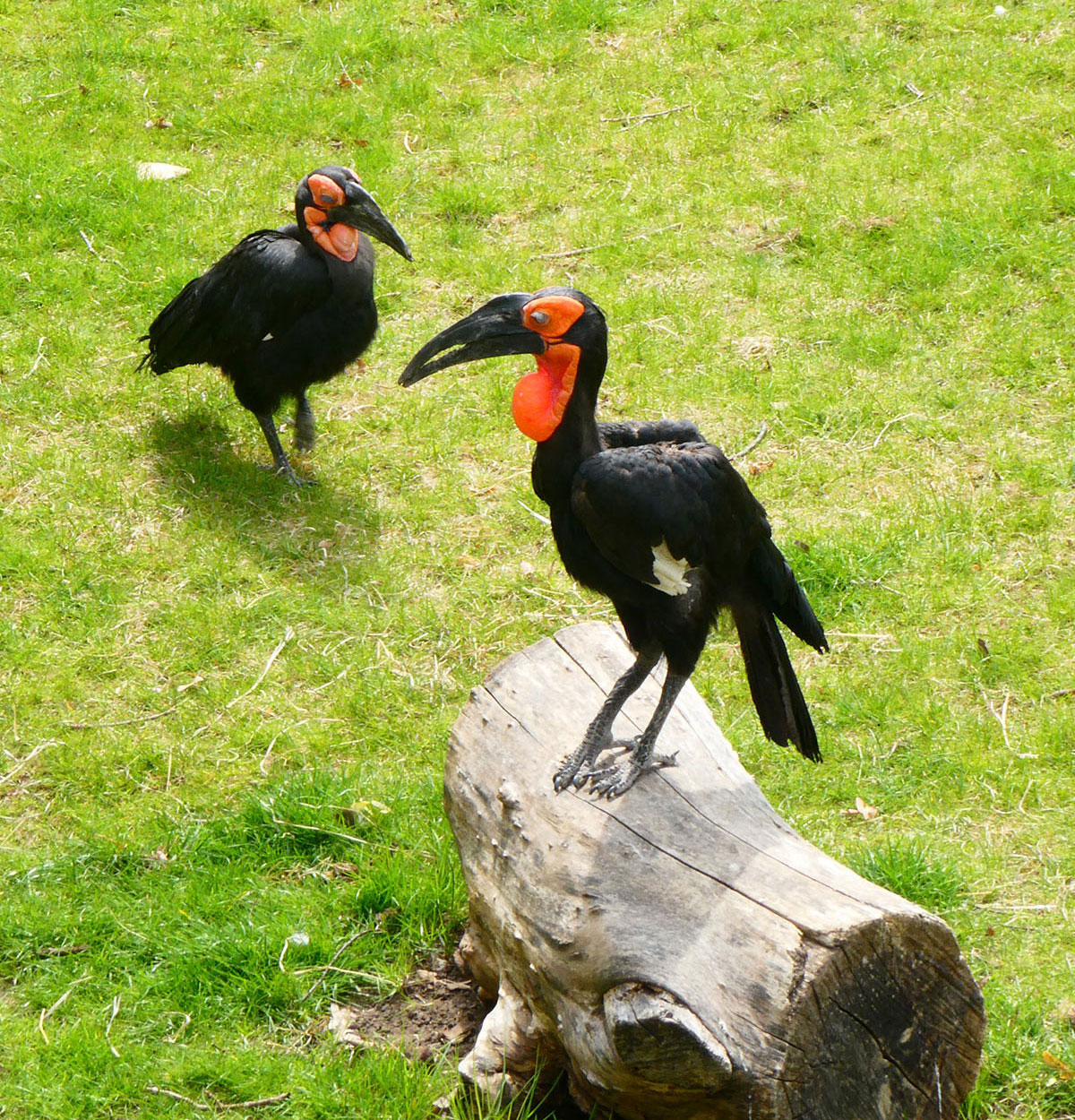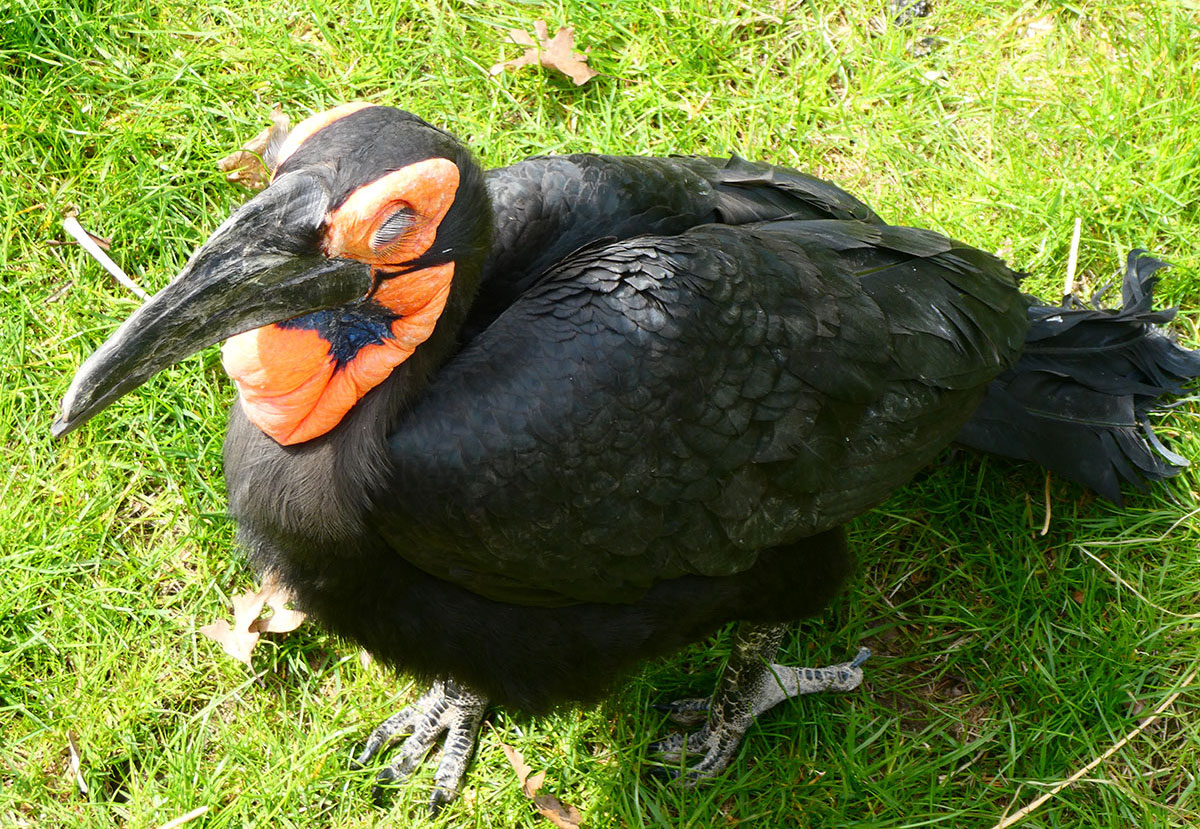Hornrietta is an eye- and ear-catching animal inside the Zoo. She and her mate, Niles, are southern ground hornbills. Their brightly colored wattles next to their black feathers are one stand-out feature. As the birds get closer to you, you may notice “eyelashes” for days! (While they look and act like eyelashes, they are actually feathers.) And finally, if you have ever heard their booming call you will never forget these magnificent animals.
Those booming calls may be responsible for the pair’s relationship. Before Niles moved into his current home, he was part of the bird show in the farm area and would call out. Hornrietta would return the calls, and they would “talk” back and forth. After some time, it was recommended the two mate. When they were finally introduced beak to beak, things went smoothly – most likely because they remembered each other’s call. The pair has now been together for 10 years. They have one offspring that has since been sent to another zoo and now has a breeding recommendation at Zoo Boise.
Hornrietta and Niles can be found in the mixed-species Savannah Yard next to the hippo home. Both of the birds usually hang out in the front-right corner. Despite their smaller size compared to other animals in the yard, they are territorial. Hornrietta is often seen chasing the cinereous vultures away from their space. Zookeepers say she is braver than Niles, and that makes them a good pair as they balance each other out.
Hornrietta and Niles are great animal ambassadors for their wild counterparts. Southern ground hornbills are vulnerable to extinction. Even though records show these birds living into their 50s regularly, and possibly even longer, they have slow reproductive rates. They live in groups that usually range from two to nine members, and only the dominant male and female of the group breed. Their deaths in the wild are attributed to habitat loss, widespread use of pesticides by farmers and hunting. They are often killed because of their reputation for breaking windows when attacking their reflection. For all of these reasons and more, the Zoo uses some of its conservation funds and donations from its Round Up for Conservation program to support the Mabula Ground Hornbill Project in South Africa. The organization is working hard to reduce threats to the hornbills, and the Zoo is proud to have supported them since 2017.


